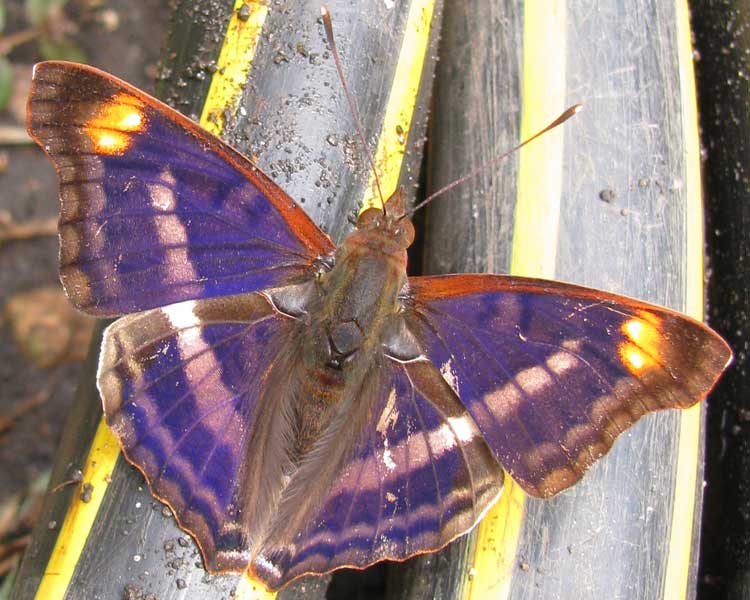Excerpts from Jim Conrad's
Naturalist Newsletter

from the December 5, 2010 Newsletter issued from Hacienda Chichen Resort beside Chichén Itzá Ruins, central Yucatán, MÉXICO; limestone bedrock, elevation ~39m (~128ft), ~N20.676°, ~W88.569°
PAVON EMPEROR
Thursday morning as I was watering flowers a species I'd not seen before -- and an exceptionally pretty one at that -- streaked out of nowhere and landed on the garden hose. You can see him drinking from the wet hose above.
Because he'd darted about so briskly, landed so abruptly, and was so thick-bodied, I thought he was a skipper, despite his antenna tips not appearing hooked as a skipper's ought to be. Maybe they hooked downward in a way that wouldn't show in the photo from above. However, Bea in Ontario wasn't fooled, pegging it immediately as a member of the enormous Brush-foot Family, the Nymphalidae. It was the Pavon Emperor, DOXOCOPA PAVON, widely distributed from northern Mexico (straying into the southernmost tip of Texas) all the way south to Bolivia. It's a member of the Emperor Subfamily, the Apaturinae, of which nine species occur in Mexico.
Pavon Emperor caterpillars feed on members of the Elm Family, of which we have at least two common, woody species here, the Iguana Hackberry and the Capulín. Adult butterflies feed on flower nectar, rotting fruit and bird droppings, all of which are easy to find here.
To me this butterfly is exceptionally pretty. Who could have guessed that the colors white, brown, powder blue, orange and rusty red might combine so handsomely?